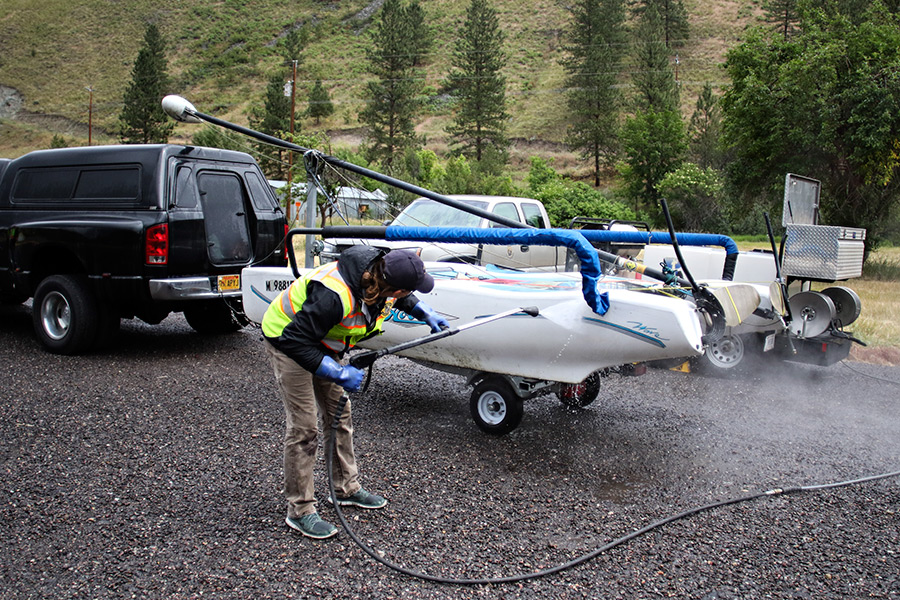Montana’s first watercraft inspection stations opened Friday in Pablo and at Clearwater Junction at the junction of Highways 200 and 83.
The inspection stations will be operated by the Flathead Basin Commission under a memorandum of understanding with Montana Fish, Wildlife and Parks. Montana statute requires all people with watercraft to stop at AIS inspection stations or face a penalty.
These stations represent the first of what will be an expanded aquatic invasive species inspection station program for the 2017 boating season in Montana.
The inspection stations in Pablo and at Clearwater Junction will be operated through April 14 after which FWP will take over operations for the remainder of the season.
In Montana, all boaters must stop when they pass an open inspection site. This applies to motorized and non-motorized boaters. People with rafts, drift boats, paddle boards, kayaks, one-man float tubes and any other type of watercraft, must stop.
FWP is also seeking public comment on proposed rules that would require all watercraft coming into Montana from out of state to be inspected prior to launching on a Montana waterbody. These rules would also require watercraft leaving Canyon Ferry and Tiber Reservoir to go through a decontamination process. Additionally, these rules would require watercraft to be inspected prior to launching when crossing from east to west across the Continental Divide.
“Boaters and water users in Montana can expect some significant changes in 2017 as we work diligently to protect our water bodies from aquatic invasive mussels, particularly west of the Continental Divide,” said Eileen Ryce, FWP fisheries division chief.
The increased efforts are in response to the positive detection last fall of aquatic invasive mussel larvae in Tiber Reservoir and suspected presence in Canyon Ferry Reservoir and the Missouri River near Townsend.
Gov. Steve Bullock declared a natural resource emergency and formed a joint mussel response team in November. The mussel response team has developed a course of action for expanded inspection stations, decontamination stations at Tiber and Canyon Ferry Reservoirs and a more intensive monitoring and public education program.
“A critical piece of our response to aquatic invasive mussels is to protect waters that are currently mussel-free,” Ryce said. “Inspection stations are a key part of this plan. However, everyone from fisherman to irrigators to stand-up paddle boarders must take responsibility for following our Clean, Drain, Dry protocols.”
State officials are encouraging boaters to clean, drain and dry their watercraft to protect Montana’s waters.
Clean all the mud and debris off your water craft and equipment. Drain all the water from them and make sure everything is dry.
